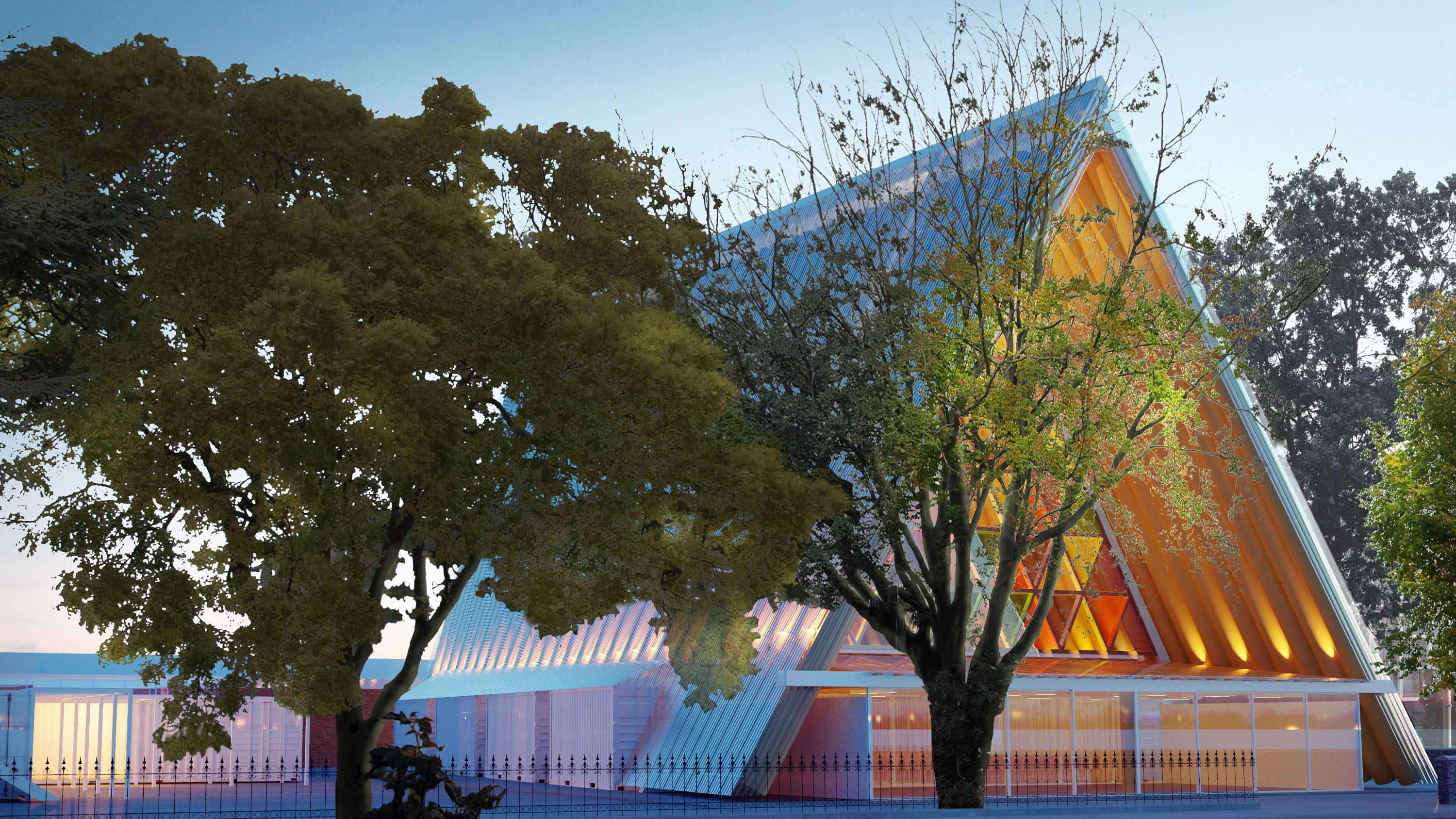After the earthquake: Christchurch’s new cardboard cathedral
A revolutionary cardboard cathedral opens in Christchurch, New Zealand, as a temporary replacement for the neo-Gothic building destroyed in the 2011 earthquake.

The new building, designed by Japanese architect Shigeru Ban, is constructed from 600mm diameter cardboard tubes coated with waterproof polyurethane and flame retardants.
It can hold up to 700 people and has a design life of 50 years. The Anglican Church of New Zealand plans to use it for at least a decade while a permanent replacement for the 19th century church is built.
“The old cathedral symbolised the city in many ways, and we think this cathedral is a symbol that Christchurch is regrouping and rebuilding,” acting dean Lynda Patterson said.
“I still keep having dreams that the ground has shifted and I’ll go there and it’s a building site again,” she continued.
185 people died in the 2011 earthquake, one of New Zealand’s deadliest peacetime disasters.
Earthquake code
The Cardboard Cathedral website explains that the material used is ideal because it is readily available, recyclable and surprisingly strong.
It also claims the new cathedral is “one of the safest buildings in the city”, conforming 100 per cent to New Zealand’s earthquake code for building construction.
The strength of the building has nothing to do with the strength of the material. Shigeru Ban, architect
“The strength of the building has nothing to do with the strength of the material,” says Shigeru Ban.
“Even concrete buildings can be destroyed by earthquakes very easily. But paper buildings cannot be destroyed by earthquakes.”
‘Emergency architecture’
Ban has established his reputation by designing “emergency architecture” for disaster zones from Rwanda to Japan, and he has described projects such as the cathedral as part of an architect’s “social responsibility”.
In a TEDx talk earlier this year, he suggested architecture had lost its way, saying: “We are working for privileged people, for rich people, for government and developers.
“They have money and power, and those are invisible, so they hire us to visualise their power and money by making monuments of architecture.”
Among Ban’s best known buildings is the Pompidou Centre in Metz, France, which opened in 2010 as a sister building to Paris’s Pompidou Centre.
-
Latest news
-
Ex-Trump lawyer Michael Cohen testifies at hush money trial3m

-
Racial hate speech laws being ‘weaponised’ warns National Black Police Association7m

-
‘Hard to believe so many women going through such horrors’, says woman whose baby daughter was stillborn8m

-
Damning report condemns ‘shockingly poor’ UK maternity services12m

-
People ‘expecting the West to stand by Georgia’, says opposition party leader5m

-




